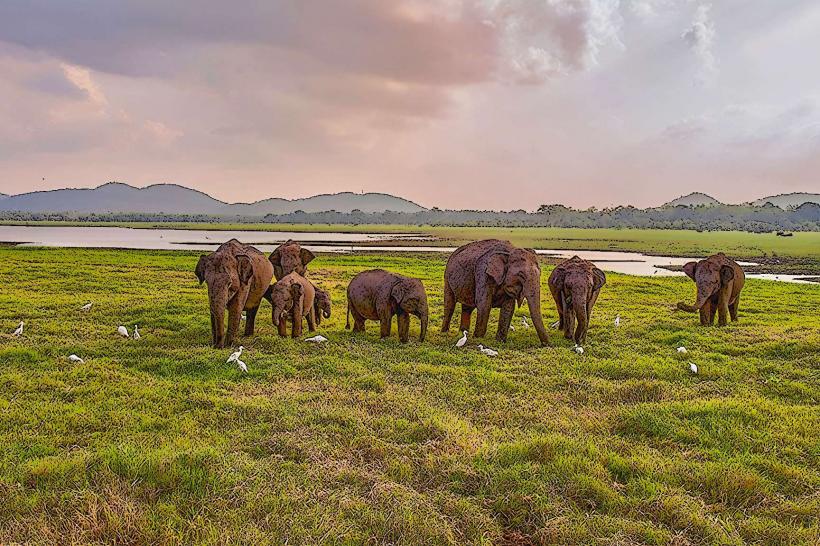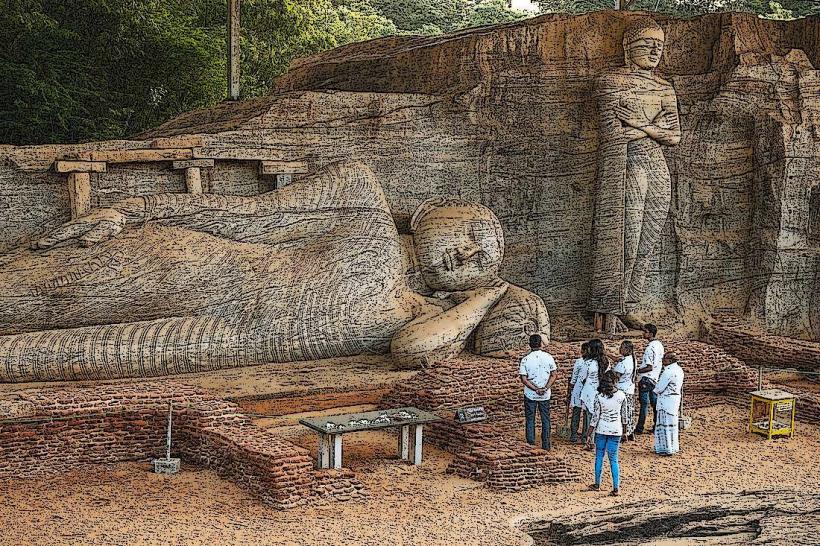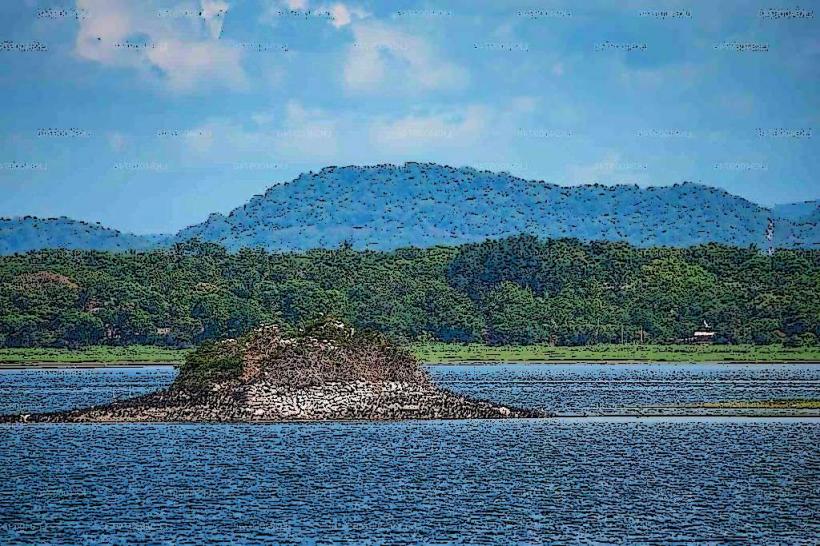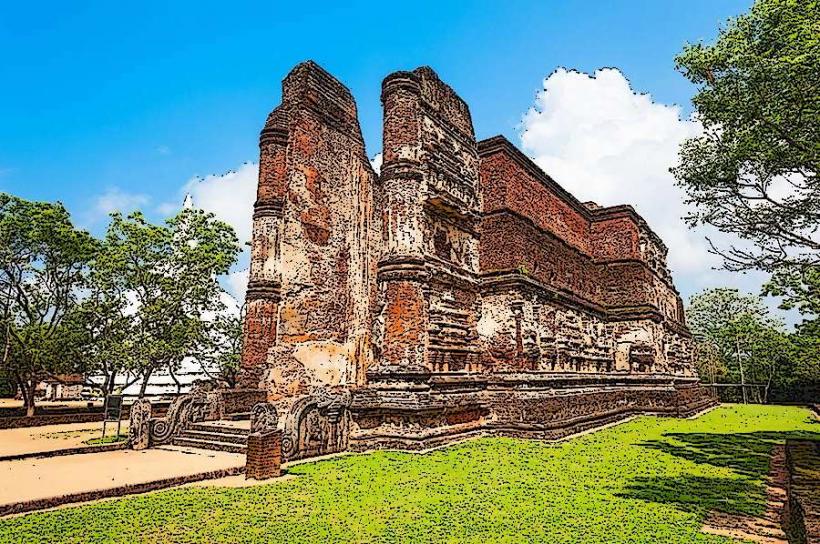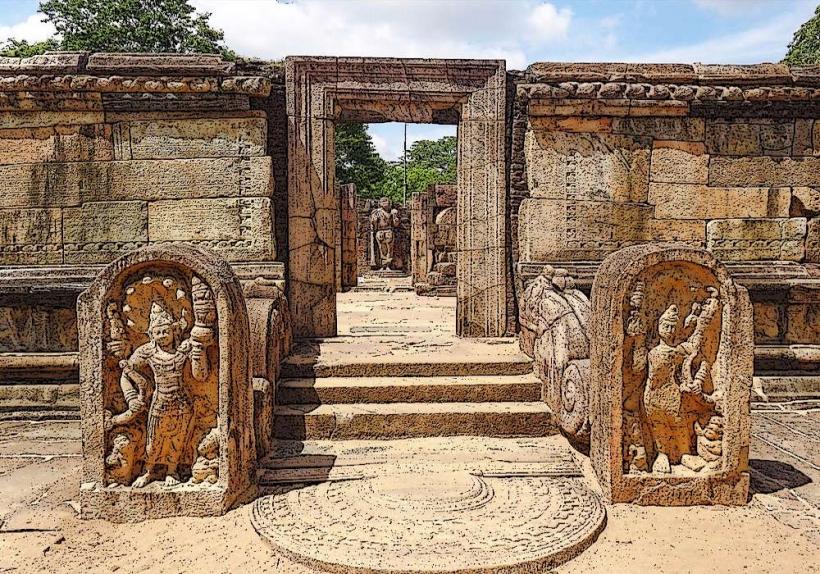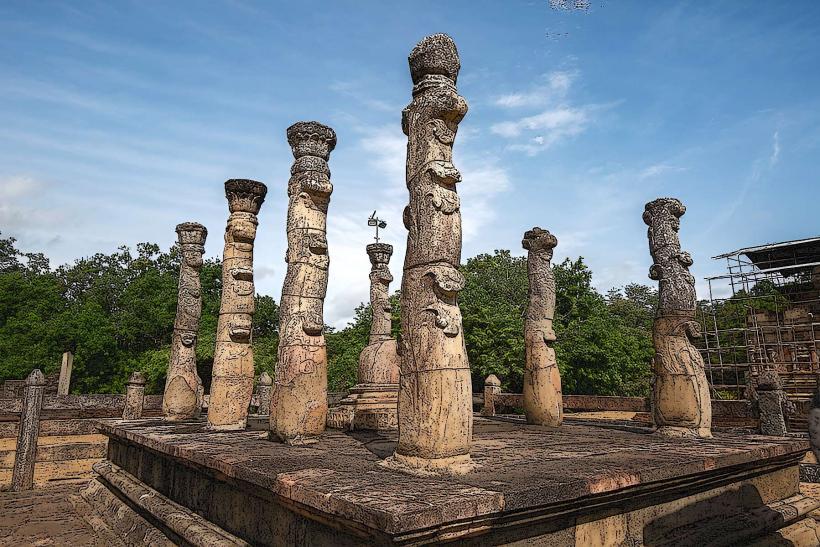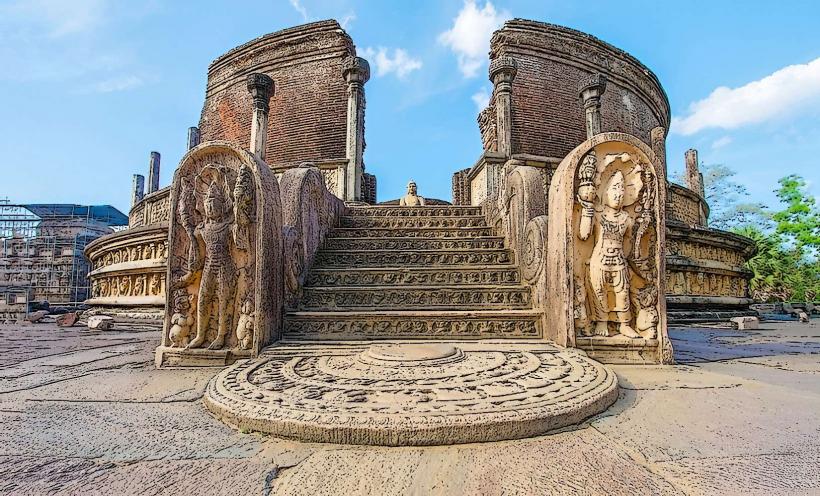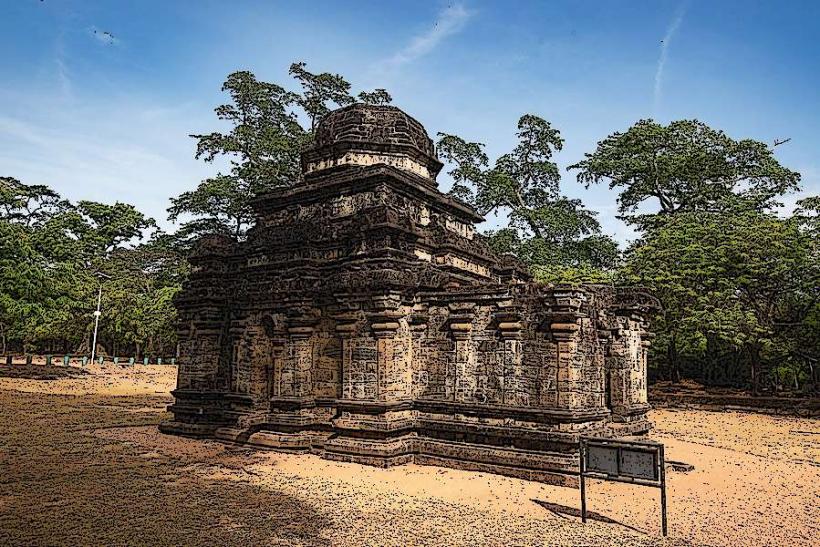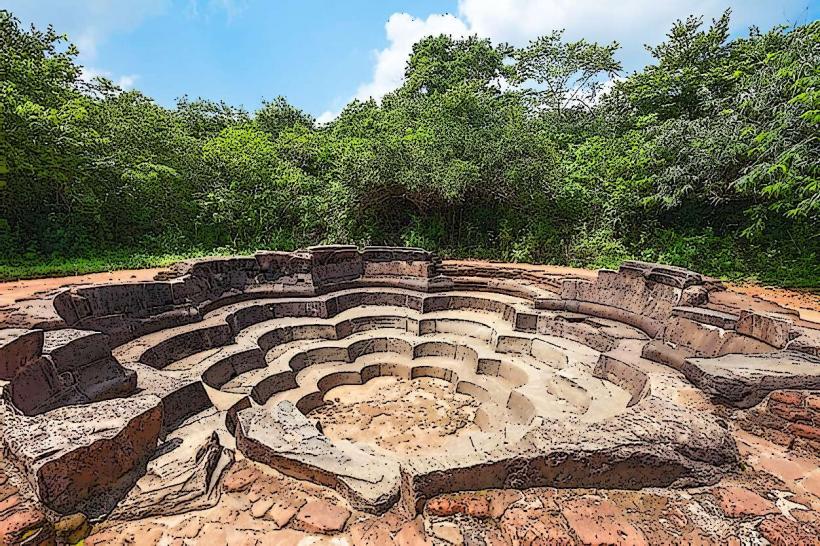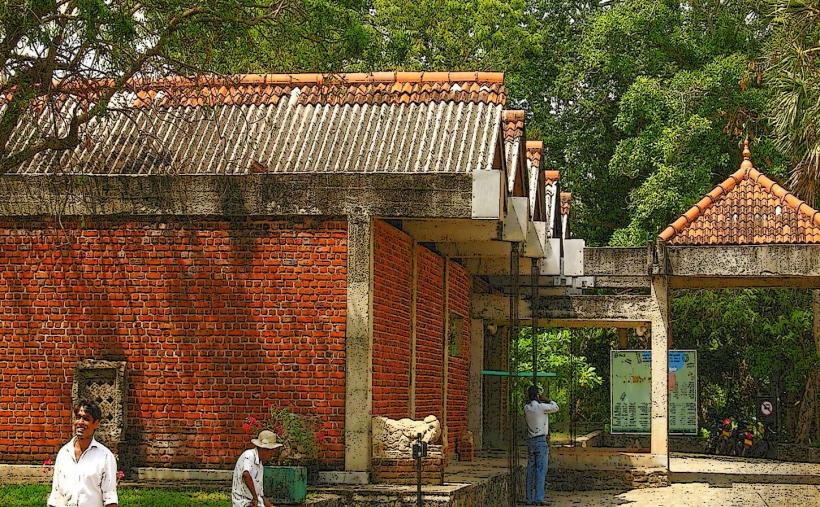Information
Landmark: Rankoth VeheraCity: Polonnaruwa
Country: Sri Lanka
Continent: Asia
Rankoth Vehera, Sri Lanka
Rankoth Vehera is one of the ancient stupas located in Polonnaruwa, Sri Lanka. It is an important Buddhist monument that dates back to the 11th century CE and is closely associated with the reign of King Parakramabahu I, who made significant contributions to the development of Buddhist religious sites and the promotion of Buddhism during his rule. The stupa is an iconic structure that represents the religious, cultural, and architectural achievements of the Polonnaruwa period.
Overview
- Name: Rankoth Vehera
- Location: Polonnaruwa, North Central Province, Sri Lanka
- Date: Built during the reign of King Parakramabahu I (12th century CE)
- Type: Stupa, Buddhist Religious Monument
- Purpose: Religious, Cultural, Historical
Historical and Cultural Significance
King Parakramabahu I’s Role:
- Rankoth Vehera was constructed by King Parakramabahu I, who was known for his dedication to Buddhism and his efforts to enhance the religious infrastructure of Sri Lanka during the Polonnaruwa period. The king's reign saw the construction of many significant religious structures, and Rankoth Vehera was one of his major contributions to the island's Buddhist heritage.
- The name "Rankoth" is derived from the Sinhala word for “golden”, reflecting the stupa's association with wealth and glory.
Architectural Importance:
- Rankoth Vehera is one of the largest and most impressive stupas in Polonnaruwa. It has a hemispherical shape typical of stupas and is known for its massive size and the fine craftsmanship involved in its construction. The stupa is made from brick, with the outer surface originally decorated with plaster and gold leaf.
- The stupa is elevated on a raised platform that gives it a commanding presence in the surrounding landscape. The entire structure, with its perfectly proportioned dome and decorated base, stands as a testament to the architectural excellence of the period.
Religious Significance:
- Like most stupas, Rankoth Vehera was built to house relics of the Buddha and to serve as a place for meditation and worship. It is an important pilgrimage site for Buddhist devotees, who come to venerate the Buddha and pay their respects to the relics enshrined within the stupa.
- The stupa symbolizes the enlightenment and spiritual liberation that Buddhists seek, making it a place of profound spiritual significance.
Symbol of Sri Lankan Buddhist Architecture:
- The design and scale of Rankoth Vehera make it an iconic example of Sri Lankan Buddhist architecture. It is considered one of the largest stupas in Polonnaruwa, second only to the Gal Vihara and Jethawanaramaya stupas in terms of prominence and religious importance. The stupa’s massive size and its elevated platform highlight its importance in the spiritual and political landscape of ancient Sri Lanka.
Key Features
The Stupa’s Structure:
- Rankoth Vehera features a large dome-shaped structure that is characteristic of the stupa design in Sri Lanka. The brickwork is exceptionally well-executed, and the stupa stands tall with a wide base that tapers slightly as it rises to a point. It is a simple yet powerful structure that conveys the immensity and reverence of the Buddhist faith.
- The base of the stupa is adorned with carved stone slabs and has stone railings that enhance the sacred and imposing nature of the site. These carvings and stoneworks feature Buddhist motifs such as lotus flowers, mandalas, and other religious symbols.
The Relics and Enshrinement:
- Like most stupas, Rankoth Vehera was built to enshrine relics of the Buddha, which were housed in a central chamber within the stupa. These relics were a significant aspect of the Sri Lankan Buddhist tradition, as they were believed to carry the sacred energy and spiritual power of the Buddha.
- Although the relics are no longer present in the stupa, the monument continues to hold immense religious value and serves as a symbolic site of veneration.
Decorative Features:
- The stupa’s outer surface was originally decorated with plaster and gold leaf, making it shine brightly and adding to the stupa’s grandeur. Although much of the decoration has faded over time, traces of its former beauty are still evident in the designs and motifs on the base and surrounding walls.
- The stupa’s entrance and railings feature intricate stone carvings, depicting scenes from the Buddha’s life and Jataka tales. These carvings not only enhance the beauty of the structure but also serve to educate visitors on the Buddha’s teachings.
Surrounding Environment:
- Rankoth Vehera is located within the Polonnaruwa archaeological site, surrounded by lush greenery and historical ruins. The stupa is situated in a peaceful and serene area, which adds to the sense of tranquility that visitors feel when they visit.
- Visitors can walk around the stupa, taking in the peaceful atmosphere and historical significance of the site. The surrounding area is dotted with smaller shrines and temples, providing a holistic experience of the Polonnaruwa period and its Buddhist heritage.
Visitor Experience
Spiritual and Cultural Insight:
- Visitors to Rankoth Vehera can gain insight into the rich cultural and religious history of Sri Lanka. The stupa is not only a place of worship but also an important architectural landmark that showcases the grandeur and spiritual significance of ancient Sri Lankan civilization.
- Information boards at the site provide explanations about the history of the stupa, the role of King Parakramabahu I, and the symbolism behind the design and construction of the monument.
Serene Atmosphere:
- Rankoth Vehera provides a peaceful setting for reflection and spiritual contemplation. Visitors can meditate in the surrounding areas or simply enjoy the serenity of the site. The stupa remains an active place of pilgrimage, and visitors often pay their respects by walking around the structure in a clockwise direction, a common Buddhist ritual.
Scenic and Historical Views:
- The stupa offers great photo opportunities with its striking architecture and the beautiful natural surroundings. The elevated platform provides a panoramic view of the Polonnaruwa archaeological zone, making it an excellent spot for sightseeing and photography.
Conclusion
Rankoth Vehera is one of the most significant and awe-inspiring Buddhist monuments in Polonnaruwa, Sri Lanka. Built by King Parakramabahu I during the 12th century, the stupa is an enduring symbol of Sri Lanka’s religious devotion and architectural achievement. The monument continues to serve as a site of pilgrimage, offering spiritual solace and a deep connection to the ancient Buddhist heritage of the island. With its historical importance, serene atmosphere, and striking architectural design, Rankoth Vehera remains an essential stop for visitors exploring the Polonnaruwa archaeological site.

